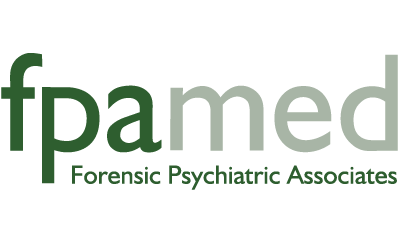The Cost of Unseen Suffering: Concealed Suffering and Suicidality
Often times, mental health symptoms are underrecognized and misunderstood. Forensic psychiatrists use careful evaluation methods to examine mental health symptoms as a complex puzzle that is composed of various biological, developmental, social, and psychological factors. These factors can affect the way an individual adapts to stress, both in terms of their emotions and their behavior. When we analyze a suicide from a forensic perspective, we seek to understand what happened—factually, psychologically, and systemically.
There are numerous consequences of suicide, and ignored are the survivors left behind. Survivors of suicide are frequently left stunned, shocked, and struggle to understand what drove their loved one to commit the ultimate act of self-destruction. It can lead to endless questions:
“How could this have happened?”
“Were there any warning signs?”
“What happened that drove them to this point?”
The tragedy is further compounded when the loved one was high-functioning, appeared happy, and had no changes in their functioning or outward emotions.
I would have known that they were suffering.
The concept of concealed suffering and its impact are often minimized in suicidology literature. Concealed suffering is essentially the very real, but unseen pain – it is emotional or psychological pain that is hidden from others (or even the sufferer themselves) in both unconscious and conscious manifestations. Concealed suffering is marked by an outward appearance of stability, normalcy, happiness, or high functioning behavior. The deception lies in that it is accompanied by internal emotional pain and turmoil that has a lack of visible warning signs to alert others to the depth of crises experienced.
Concealed suffering can result in deliberate masking where the suffering is hidden due to a fear of stigma, burdening others, disappointing others, and being seen as weak. Additionally, it can confirm their own negative self-evaluations and be an admittance to failing to live up to their own standards. Masking is regularly seen in people who are perfectionists and those driven to be high achievers. They often are held to a higher standard by others where they feel pressure to maintain appearances. They can feel responsible for others’ happiness. They can have poor insight in recognizing that they are suppressing their depression and anxiety by maintaining this deceptive facade. Concealed suffers are often unforgiving of themselves. They may view themselves negatively and entertain a wide variety of intrusive, deprecating thoughts. This results in an increased pressure to maintain appearances, further aggravating the cycle that they are trapped in. Therefore, the traditional red flags and warning signs of suicide may be absent or intentionally suppressed.
Concealed suffering is a key, but underrecognized risk factor for suicidality. The cost of concealed suffering can be significant: maintenance of appearances often depletes any energy that was already low from psychic pain and can lead to further distress, negative emotions, burn-out, and often hopelessness. Maskers are associated with frequent suicidal thoughts, making more detailed suicidal plans, and being at a higher overall risk for well-planned and lethal suicide attempts. Despite being able to successfully portray wellness without arousing suspicion, their silent inner turmoil can culminate in the most final act of despair: their death.
The tragedy of suicide is in its finality and lack of answers to questions that were left unasked. A suicide risk assessment can be a critical component in a wide range of forensic psychiatric cases. In the legal setting, suicide risk assessments can be utilized in a variety of ways, including:
-
Criminal cases:
- Insanity
- Competency to stand trial
- Sentencing and mitigation
- Psychiatric (or psychological) autopsy
-
Civil cases:
- Medical malpractice
- Personal injury or emotional distress claims
- Wrongful death/negligence lawsuits
- Child custody
- Asylum or immigration proceedings
- Civil commitment
Suicide risk assessments can be challenging for a number of reasons. If the subject is deceased, conclusions must be drawn from secondhand information rather than personal examination of the subject. Medical records can be incomplete, selectively documented, and inaccurate. Additionally, collateral informants, such as family, friends, or co-workers, can offer inconsistent or emotionally charged accounts, especially when guilt, grief, or liability are involved. The expert must evaluate the reliability, credibility, consistency, and potential bias in each source of information. Furthermore, expert must be able to recognize their own bias, especially hindsight bias. For example. in suicides, there can be a distortion of perception of past warning signs and risk factors simply became the outcome, suicide, is already known. Experts must distinguish whether there were imminent warning signs or other vulnerabilities, which can inform conclusions about preventability and negligence.
Most importantly, the expert needs to educate the trier of fact about the unpredictability and complexity of suicide. Suicide is rarely the result of a single cause. It often reflects a multifactorial interplay of mental illness, life events, personality traits, and situational stressors. As such, suicide risk assessments require retaining a well-trained forensic expert that conducts a meticulous data review, engages in critical thinking, and demonstrates knowledge about current literature and standards.
About the Author:
Dr. Ayesha Ashai received her BA in Psychology and Spanish from University of Michigan in Ann Arbor. She went on to attend medical school at Wright State University Boonshoft School of Medicine in Dayton, Ohio. She completed her adult psychiatry residency at University of Maryland and Sheppard Enoch Pratt Hospital in Baltimore, Maryland, where she later served as the executive chief resident. After, she completed her forensic psychiatry fellowship under the leadership of Dr. Charles Scott at University of California, Davis in Sacramento, California. She is certified by the American Board of Psychiatry and Neurology in Psychiatry with added qualifications in Forensic Psychiatry. She has years of experience in the diagnosis and treatment of a broad range of psychiatric disorders in various settings including civil and forensic hospitals, emergency rooms, outpatient clinics, and jails. She has specialized experience in working with patients who are Muslim, those with an Indian or Pakistani background, as well as Hispanic patients. She is licensed to practice medicine in California, Ohio, Pennsylvania, Illinois and Texas. More about Dr. Ayesha Ashai.


